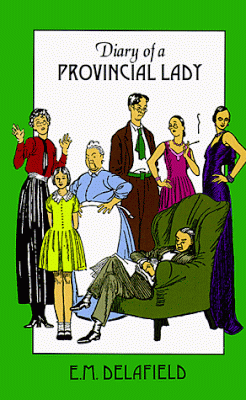 |
| Todd Downing, c. 1930 |
Physically, they were very different in height, with Jim Thompson standing high at 6'4" and Todd Downing a modest 5'6". However, both had Native American ancestry (as was often the case in Oklahoma).
Thompson is said by his family to have been one-eighth Cherokee through his maternal grandmother, while Downing believed he was one-fourth Choctaw (though a modern family researcher says that Downing's paternal grandmother, who died when Downing's father was five, was not full-bood, but rather half-blood, Choctaw, which would make Downing, like Thompson, one-eighth Indian). Certainly in photos of the two men Thompson's high cheekbones and Downing's dark eyes and hair carry the suggestion of indigenous ancestry.
 | |||
| Jim Thompson's literary reputation certainly is alive and well Will there be any sort of Todd Downing revival? |
Robert Polito, Jim Thompson's biographer, reports that though "all through his life Jim Thompson voiced pleasure in the awareness that he was one-eighth Cherokee," nevertheless "his Native American heritage never composed a conspicuous plank in his personal identity."
This is far different from Todd Downing's case. Both Todd and his father, Sam Downing, were enrolled and active members of the Choctaw Nation (Todd's mother, Maud Miller, was a native Iowan of German, English and Scotch-Irish descent).
Sam Downing all his life was involved in Choctaw social and political affairs and Todd for his part signaled his views in 1926 when he, then a student at the University of Oklahoma, published a short piece in the Oklahoma journal The American Indian called "A Choctaw's Autobiography," wherein he unambiguously signaled his ethnic identification as a Choctaw.
Todd Downing's Choctaw heritage and his interest in indigenous culture influenced him to study Mexico in college, to become an instructor in Spanish at the University of Oklahoma and to set most of his detective novels in Mexico. His exploration of Mexican culture in his detective novels is his signature achievement in the mystery genre.
In addition to sharing a Native American heritage, both Jim Thompson and Todd Downing had scandals in their family backgrounds.
 |
| Caddo County courthouse, completed in 1906 the year Jim Thompson was born and a year before the Thompson family fled Oklahoma |
As discussed in part one of this piece, this latter event led to a downward spiral of wandering and privation for Thompson's family and it hugely influenced Thompson's dark crime fiction (psychopathic sheriffs figure in two of his most famous novels).
In Todd Downing's case both his grandfathers committed crimes of varying sorts. In 1866, Todd's grandfather George Thornton Downing left his Texas wife and children (after deeding over all his property to a son) and moved to Indian Territory, Choctaw Nation, where he married a Choctaw woman, Melissa Armstrong, said to have come to Oklahoma on the Trail of Tears as an infant.
Before their deaths (Melissa probably in 1877, George in 1880), the couple had four children, including Todd's father, Sam. Apparently the children of the second marriage never learned that their father was a bigamist; certainly Todd Downing and his sister Ruth never knew such was the case, for they believed that their grandfather's first wife had died before he came to Oklahoma.
Todd's other grandfather, Daniel Miller, originally had been an upstanding citizen of Albia, Iowa. A Civil War veteran, Secretary of the Albia Lyceum, former Deputy District Court Clerk and dry goods merchant, Miller married Awilda Shields, the daughter of a respected doctor, in 1868.
 |
| Victorian commercial block in Albia, Iowa |
After his release (with time off for good behavior), Daniel Miller and his family made their way by 1891 to Atoka, Oklahoma, where his wife Awilda had prominent cousins. Daniel's and Awilda's daughter, Maud, married Sam Downing in 1899.
Although both Todd's grandfathers had scandalous secrets in their pasts (and one served jail time), his parents were model citizens. Left motherless at five and fatherless at eight, Sam Downing was taken into the home of a prominent local merchant family, the Blossoms, and raised to be a devout Presbyterian and Republican. The parents of Sam Downing's foster mother had been Quaker teachers and Sam was educated for two years at Earlham College, a prominent Quaker college in Indiana (the school began admitting non-Quakers in 1865).
 |
| Downing House, Atoka |
Also living with them, after her husband's death, was Awilda Miller, Todd's one surviving grandparent. She would live in the Downing home until her death in 1939 and was a great influence over her grandchildren. Like Sam and Maud Downing, Awilda Miller was a highly devout Presbyterian.
As I discussed in part one, Jim Thompson hated his own pious maternal grandmother and when his family's financial circumstances forced his mother to take him and his sisters back to Nebraska to live with her parents his grandmother's presence was a torture to him, by his account.
In Todd Downing's case, however, the maternal grandmother was a warm and supportive presence, even standing behind Todd's sister Ruth when she turned down a chance of marriage and moved to New York to do graduate work at Columbia University (she became a social worker of note).
So the Thompsons were a family that led an economically volatile, peripatetic and often unhappy existence, while the Downings, despite scandals in their past, became pillars of their small Oklahoma community, Atoka, and provided a stable, happy and ordered upbringing for the Downing children.
As I also discussed in part one, Jim Thompson, despite the difficulties in his childhood, became a great reader of imaginative literature, thanks to the good offices of an uncle. Todd Downing did as well. He read, for example, a great deal of Sir Walter Scott and H. Rider Haggard. In the 1910s his eye was caught by the books of Arthur B. Reeve, creator of scientific detective Dr. Craig Kennedy, and Sax Rohmer, creator of the diabolical criminal mastermind Dr. Fu Manchu (Edgar Wallace would follow in the 1920s).
 |
| one of the Arthur B. Reeve books read by Todd Downing as an adolescent |
Jim Thompson attended classes at the University of Nebraska but dropped out after two years, married and sought to make a living during the Depression-wracked 1930s as a freelance writer in Oklahoma City. Todd, on the other hand, got both a B.A. and an M.A. from the University of Oklahoma, and he also taught there as an instructor, from 1925 to 1935 (he resigned as a teacher in the latter year, hoping to make his living solely from writing).
Jim Thompson wrote true crime articles for magazines in the 1930s before becoming, as discussed in part one, head of the Federal Writers' Project in Oklahoma between 1936 and 1940. After he left Oklahoma and moved to San Diego, California in 1940, Thompson would publish two mainstream novels, one in 1942 and one in 1946. He would not launch the crime fiction career that would make his name until 1949, when he was 43.
Todd Downing, on the other hand, published his first novel, a mystery called Murder on Tour, in 1933, when he was 31 (it was written, mostly in Mexico City, the previous year). Downing would write a total of nine detective novels between 1933 and 1941, seven of them with his most important series detective, U. S. Customs Agent Hugh Rennert.
 |
| Todd Downing's first detective novel, soon to be reprinted |
Like Jim Thompson, Todd Downing had aspirations to be a mainstream novelist, and he planned in 1942 to publish a historical novel about Mexico called Under the Rose, but it never appeared (in 1940 he did, however, produce a well-regarded non-fictional study of Mexico, called The Mexican Earth).
Also like Jim Thompson, Todd Downing would leave Oklahoma in the 1940s. Thompson once disgustedly referred to Oklahoma City as "a God-forsaken place" while Downing in 1939 wrote that he had of late become "rather at odds with Atoka and all it represents."
After Downing left his native state, he worked in the advertising business in Philadelphia in the 1940s, then taught at schools in Maryland and Virginia in the 1950s. Yet, in marked contrast to Jim Thompson, Todd Downing returned to Oklahoma in the 1950s and spent the rest of his life there.
After his father Sam died in 1954, Downing came back to Atoka to live in the old family home with his mother Maud, now an octogenarian. He lived there for about two decades, from 1955 to his death in 1974, three years before Jim Thompson's demise. During this time Downing taught at Atoka High School and later Southeastern Oklahoma University, in the nascent Choctaw language program.
Todd Downing's own crime writing is much different from Thompson's noir fiction. For one thing, it's true detective fiction, each book offering readers a puzzle to be solved. As Downing's book reviews show, he loved the fair play detective fiction of Agatha Christie, Ellery Queen, John Dickson Carr, S. S. Van Dine and many others.
Moreover, Downing's detective fiction looks outward, to Mexico and its culture, which Downing believed could impart North Americans lessons of value about life (and death). Thompson's fiction, on the other hand, looks inside himself, seemingly, to a midnight place of darkness and despair.
There is evidence that Todd Downing himself had in his life some times of darkness and despair, deeply personal unto himself (for more on this see Clues and Corpses); yet, though he believed detective fiction could have higher literary elements to it, he accepted the then prevalent view of the genre as escape literature, something to put oneself on better terms with life.
 |
| Hell on Earth |
It's also interesting to note how in Thompson's novels The Killer Inside Me (1952) and Pop. 1280 (1964) Thompson portrays southern sheriffs as horrific murdering fiends (of course they're hardly alone in this respect in Thompson's novels).
Conversely, Todd Downing's Texas sheriff Peter Bounty, introduced in the Hugh Rennert mystery The Last Trumpet (1937) and the solo detective in Death Under the Moonflower (1938) and The Lazy Lawrence Murders (1941), is an admirable human being--as is Hugh Rennert himself.
Left unasked, until the very end, has been the question: Did these two men, both crime writers molded by Oklahoma in the first decades of the twentieth century, ever actually meet?
 |
| Jim Thompson's friend Louis L'Amour like Todd Downing was a book reviewer for Oklahoma City's major newspaper |
Todd Downing reviewed books for Oklahoma City's major newspaper, the Daily Oklahoman, as did Jim Thompson's friend from the Federal Writers' Project, future bestselling Western novelist Louis L'Amour.
The newspaper's literary page was edited by Kenneth Kaufman. Polito refers to "the lively Sunday literary page that University of Oklahoma Professor Kenneth Kaufman edited for the Daily Oklahoman."
Yet by the time Thompson became involved with the Federal Writers' Project in 1936, Todd Downing had left the University of Oklahoma (located in Norman, which neighbors Oklahoma City, home of the University) and returned to live with his family in Atoka (he became known back in the university community as "the hermit of Boggy Creek," after Muddy Boggy Creek, which runs by Atoka). Still, he occasionally sallied forth to participate at writers' conferences at the University of Oklahoma and Oklahoma state, until he stopped writing fiction and left Oklahoma in 1942.
Did Jim Thompson and Todd Downing ever meet? This remains an unsolved mystery. Yet whether or not the two authors actually met, they are both products of the Oklahoma of a century ago, and they both did the state proud with their fine--if very different--works of crime fiction.




































